
2025 JAC T9 vs Toyota HiLux comparison: Durability test
Dual-cab utes are the most popular vehicles on sale today in Australia, but if you’re after a workhorse that does the job and doesn’t cost an arm and a leg, will a more affordable alternative manage the same workload?
We decided to put the new JAC T9 up against the tried and tested (and undeniably popular) Toyota HiLux.
The tests? We loaded them both up to their Gross Vehicle Mass (GVM) and set out to see whether the Chinese-made JAC ute could achieve the same outcome as the Japanese-designed, Thai-built HiLux across our hill road, and over the grueling durability track at our proving ground.
First test: The Hill Road Load Test
The first test on our hill road focused on performance under load.
Both the JAC T9 Haven and Toyota HiLux SR were loaded with an identical amount of weight, specifically calculated to match the GVM of the HiLux – this meant the Toyota was at its maximum legal loaded capacity.
One of the first things we noticed when loading the vehicles was that a standard pallet carrying a 500kg weight block fits into the tray of the JAC T9 but not the HiLux, which required loading it with bags to achieve the same weight and similar distribution.
Toyota HiLux
The HiLux SR we tested featured the optional ‘V-Active’ 48V mild-hybrid system.
As is common with many leaf-sprung utes, the HiLux felt significantly better and more comfortable with weight in the tray compared to being unladen. When unladen, the HiLux tends to be quite firm and unforgiving.
On the hill road – designed to simulate a typical Australian country road with varying gradients (including a steep 15 per cent climb) – the HiLux performed confidently.
Acceleration felt strong, even up the steepest climb, and the ride was very good under load – significantly better than when unladen.
On the final bumpy section, which features a few undulations, the HiLux maintained its composure and comfort even at around 70km/h.
JAC T9
Setting off in the T9, we immediately noticed the quieter turbo-diesel engine compared to the HiLux.
While the T9 has less torque (just over 400Nm compared to the HiLux’s 500Nm), its acceleration under load was decent and surprisingly capable, not feeling completely underdone with this much load in the tray.
Like the HiLux, the T9’s ride quality improved significantly when laden, feeling settled and comfortable on the hill road.
Unloaded, the T9 can be quite busy on even smooth roads, lacking ride comfort and compliance when unladen.
It handled the 15 per cent gradient well, accelerating adequately – not as strongly as the HiLux, but confidently enough to make it up the hill without any great concern.

JAC T9 
Toyota HiLux
Moving back down gears was a little fiddly, and the T9 could definitely benefit from paddle shifters to help control its speed on long downhill stretches.
On the undulating section at 70km/h, the T9 felt settled and composed – the same if not slightly better than HiLux.
Second test: The Torture Test
The second part of this test was all about accelerated wear testing.
While they also test ride quality, these roads were also designed to simulate long-distance driving by accelerating wear on suspension and body components during vehicle development.
Our test road featured two parts:
- Belgian Pave: A specifically constructed paved road with a rough, uneven surface designed to global standards to stress suspension components.
- Torture Test Road: A 2km custom-built track designed to exceed the stress of the Belgian paving, featuring sections of exposed rock and harsh bumps to simulate extreme Australian conditions. This road was historically used for rigorous vehicle development and is known to be physically demanding on car and their drivers, who were limited in terms of how long they could stay behind the wheel without breaks during testing.
Throughout these tests, an iPhone with a tri-axis accelerometer was attached to the driver’s seat to measure the G-forces transmitted to the occupant.
The data was then analysed using the Root Mean Square (RMS) method, a statistical measure quantifying the average intensity of vibrations – a lower RMS value indicates a more comfortable ride with less intense shaking.
Both vehicles completed two laps of each torture section.
Belgian Pave results:
- The HiLux felt surprisingly comfortable on this surface, with no unusual rattles or squeaks noted. Its RMS value was calculated at 4.84.
- The JAC T9 also felt good, although some movement of the tray (independent of the cabin) was visible. Its RMS value was 4.39.
- The data showed the JAC T9 was approximately 10 per cent more comfortable than the HiLux on the Belgian Pave, based on its lower RMS figure. While there wasn’t a huge difference felt during testing, it indicated the less expensive T9 performed slightly better in this specific test.
Torture Test Road results:
- The HiLux handled the extremely rough road reasonably well, feeling fairly comfortable considering the severity of the surface, especially compared to the previous testing we conducted here using a LandCruiser 70 Series and Mahindra Pik-Up. It experienced significant jolts, particularly over a paved section with large ‘whoops’. Over this stretch of the torture test, the HiLux recorded an average RMS of 10.05.
- The JAC T9 felt composed even on the roughest sections, not getting thrown around excessively compared to the HiLux, which suggests good stability on corrugated roads. It handled the various harsh elements well, though the experience was still physically demanding.
- This test data here showed the most significant difference. The JAC T9 recorded an average RMS value approximately 50 per cent lower than the HiLux’s (around 5.0 compared to 10.05). This indicates that substantially less vibration and fewer intense jolts were being transmitted through the seat to the driver in the T9 over the same brutal stretch of road at the same speed. While it’s hard to translate RMS directly to perceived comfort, the data clearly showed the T9 subjected its occupants to significantly less physical stress on this extreme course.
CarExpert’s Take
Based solely on the specific load-hauling and durability tests conducted here, we came to the following conclusions…
- Load Hauling: While the HiLux offered stronger acceleration due to its higher torque, the JAC T9 performed capably and comfortably when loaded to the HiLux’s GVM. The performance difference didn’t feel proportionate to the significant price difference – getting a HiLux with a similar level of specification to the JAC T9 Haven would cost significantly more than the SR, which is pretty sparsely equipped.
- Comfort & Durability Simulation: In the unladen torture tests, the JAC T9 proved to be measurably more comfortable than the HiLux, absorbing bumps better on both the Belgian Pave and, most notably, the extremely rough torture track – showing a 50 per cent lower RMS vibration reading.
So where did we land with all of this? It’s important to remember this was a short-term test focused on specific performance aspects.
It doesn’t predict long-term reliability over many years, but if you are specifically after a workhorse with added comfort and luxuries, our testing showed that the T9 was as capable as the HiLux across these tests.
There was also additional headroom on GVM with the T9 above and beyond the HiLux. Ultimately, you will want to balance that GVM with the lower power output from the JAC’s engine.
We’ve now done this comparison test with the Toyota LandCruiser 70 Series and Mahindra Pik-Up, as well as the JAC T9 and Toyota HiLux – are there other combinations you’d like us to compare?
Share your thoughts with us in the comments below!
MORE: Everything JAC T9
MORE: Everything Toyota HiLux

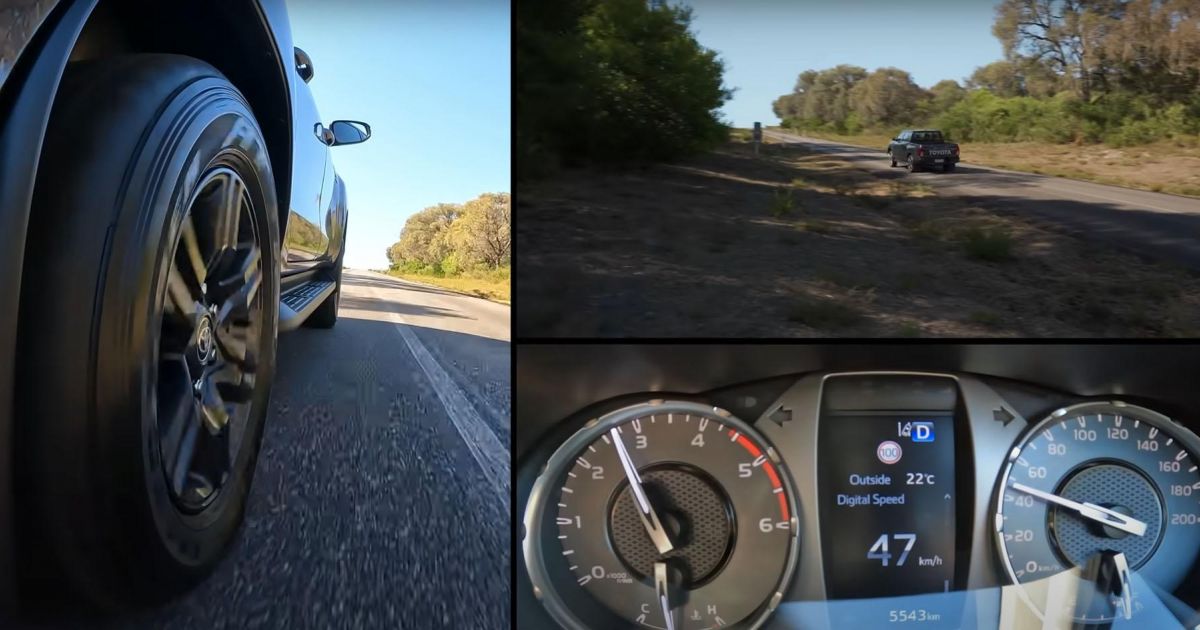
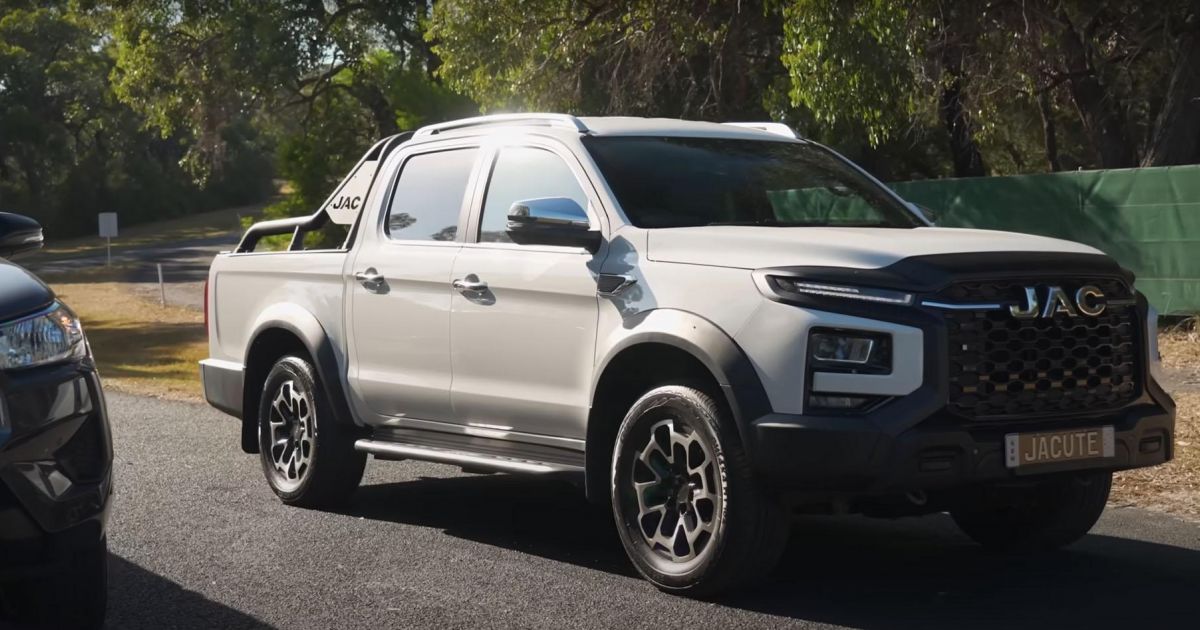
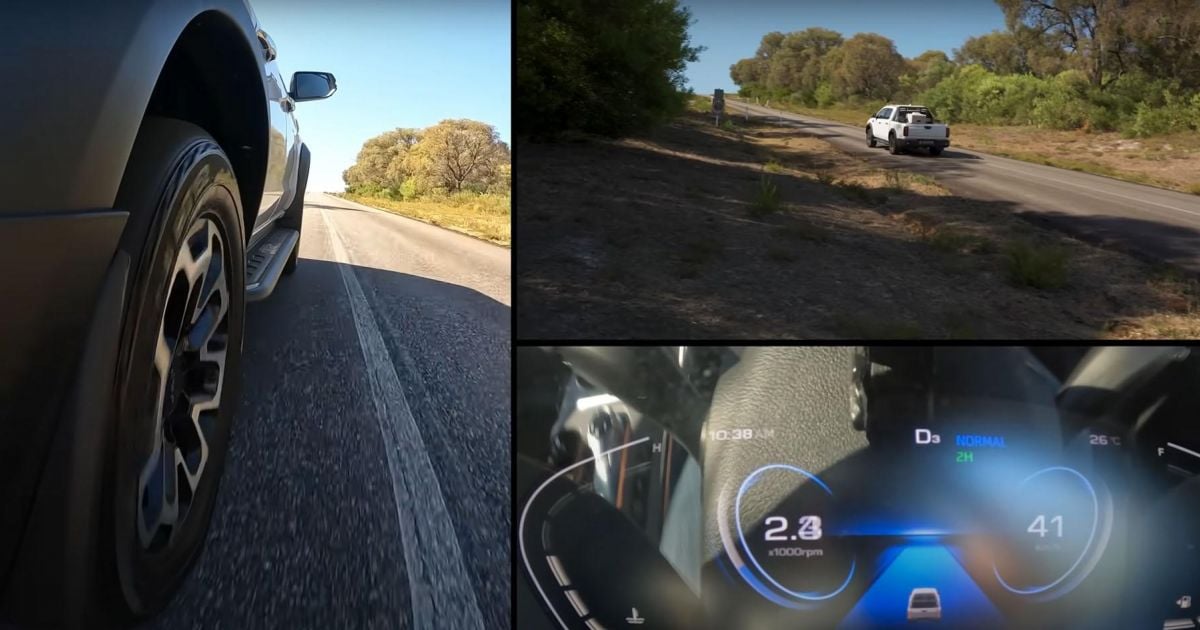
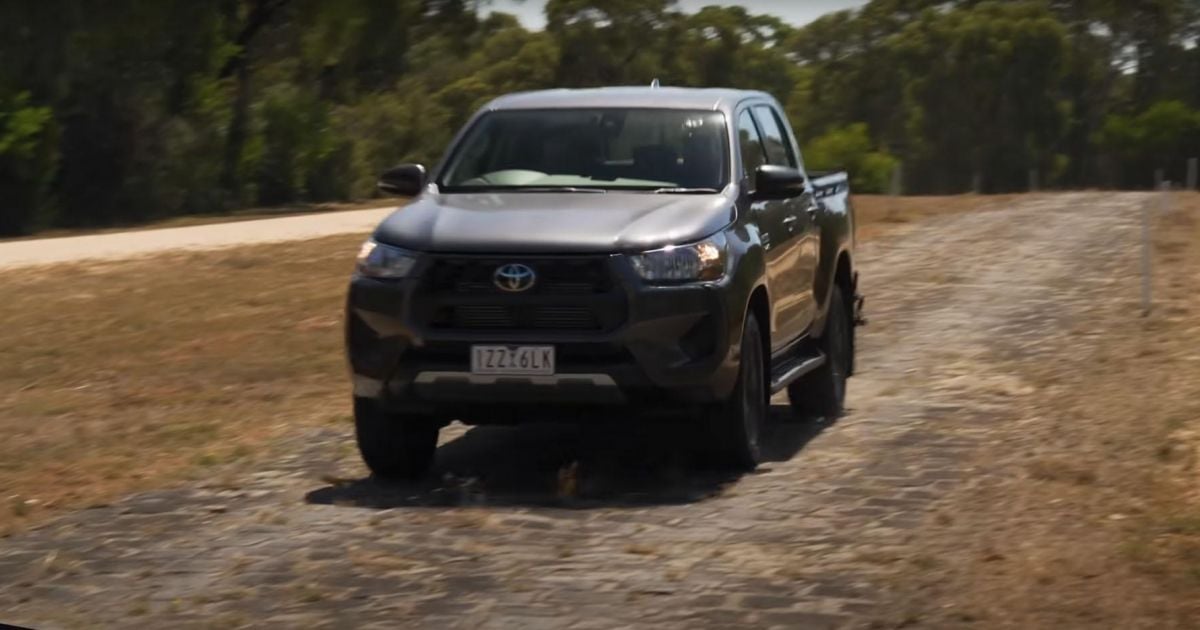




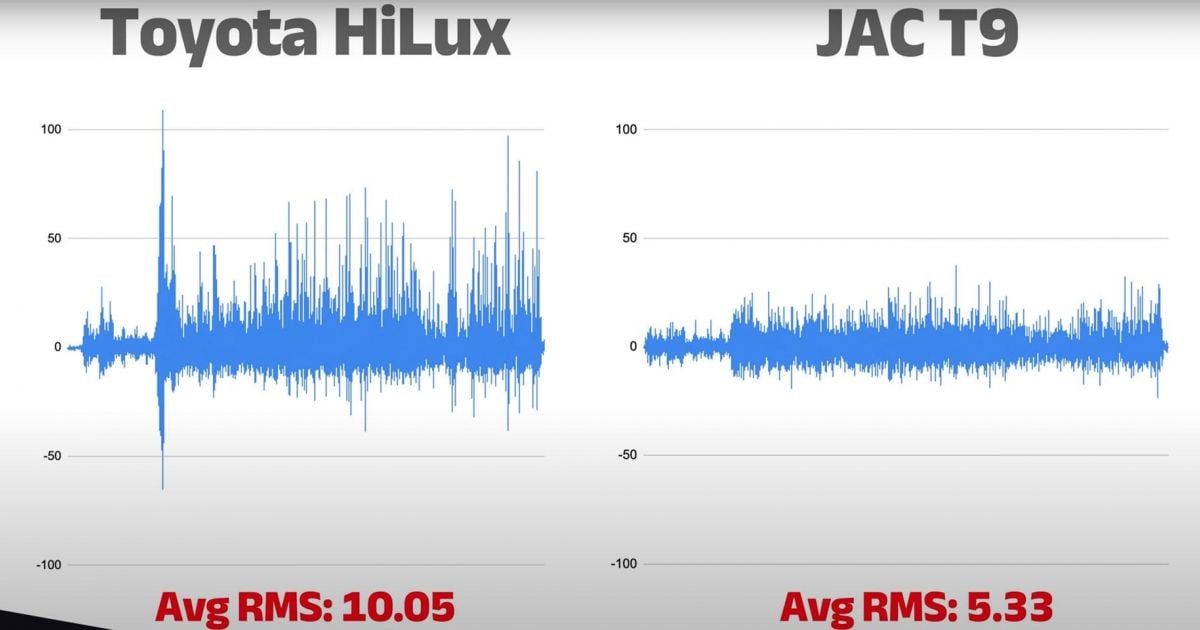
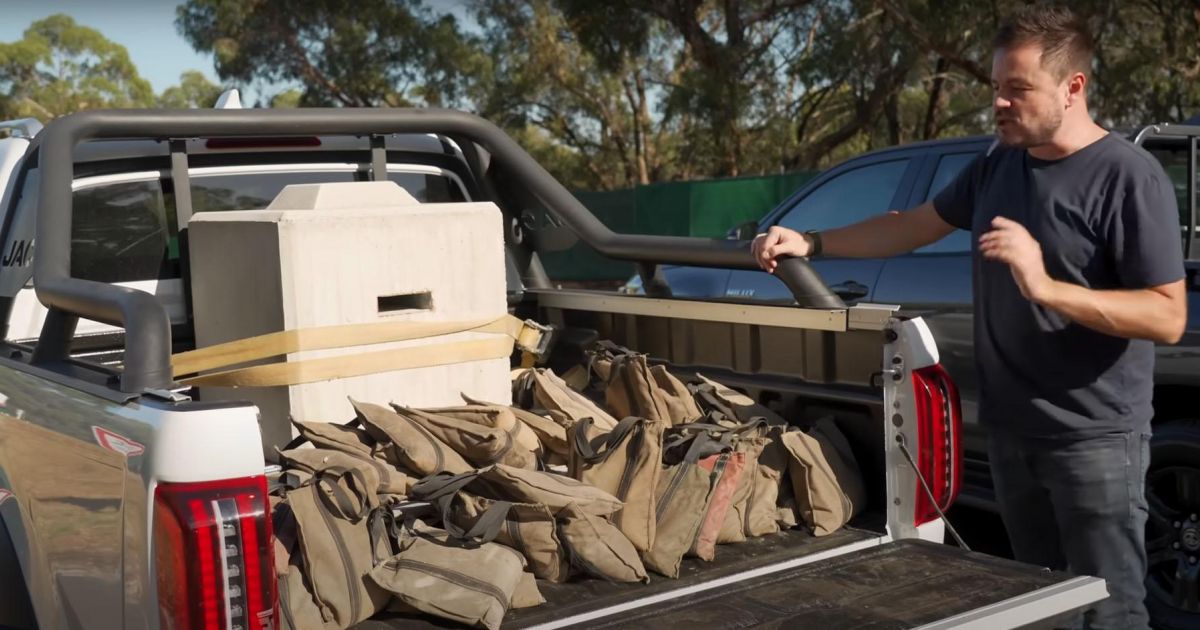
Leave a Comment